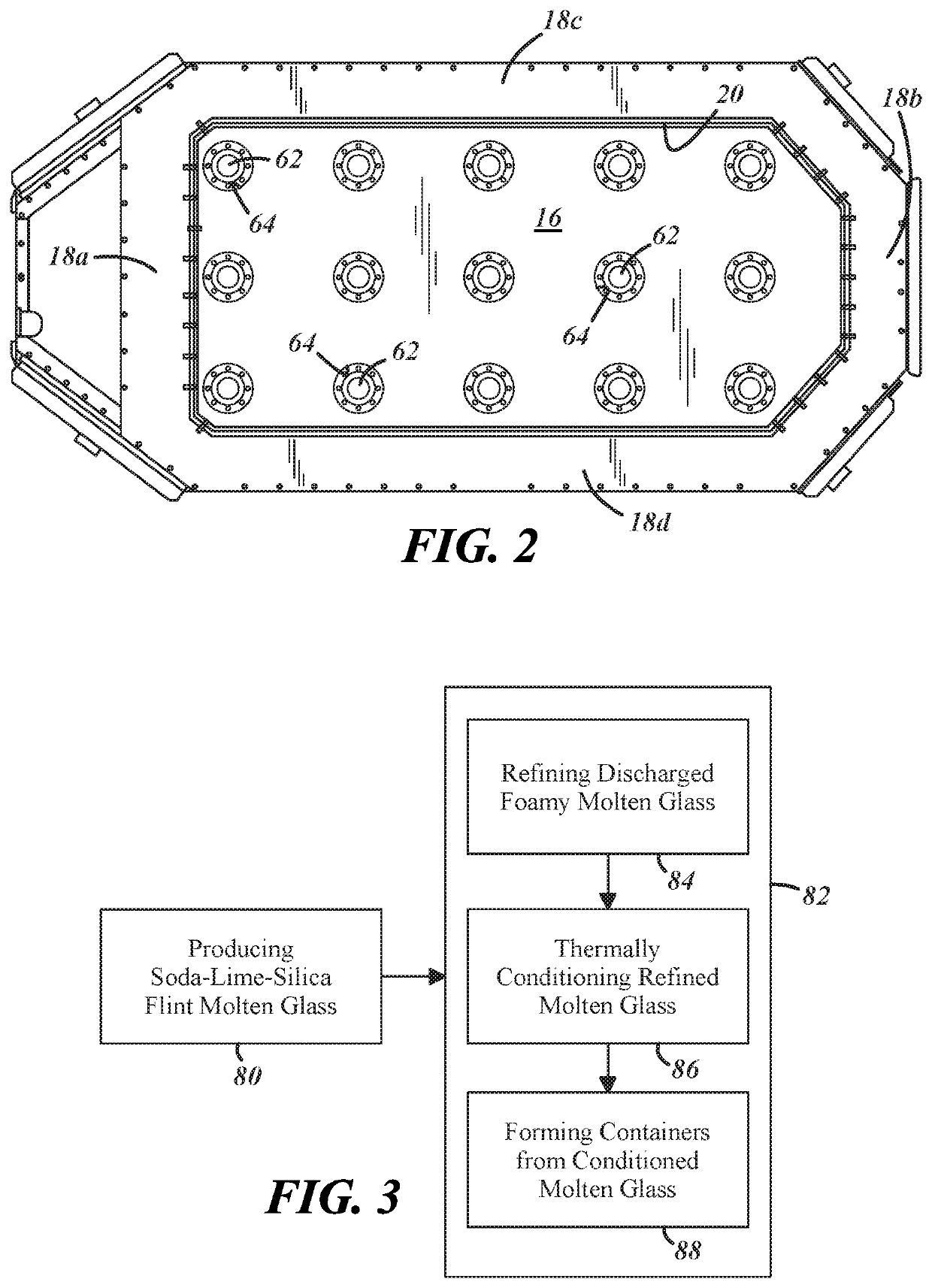Producing Flint Glass Using Submerged Combustion Melting
a technology of combustion melting and flint glass, which is applied in the direction of glass melting apparatus, blowing machines, manufacturing tools, etc., can solve the problems of high temperature, high melting temperature, and high melting temperature of molten glass, and achieves a relatively low density, high melting temperature, and high melting temperature.
- Summary
- Abstract
- Description
- Claims
- Application Information
AI Technical Summary
Benefits of technology
Problems solved by technology
Method used
Image
Examples
Embodiment Construction
[0018]A representative submerged combustion (SC) melter 10 is shown in FIGS. 1-2 to demonstrate the practice of the method for producing molten glass from which flint glass articles can be formed. The SC melter 10 includes a housing 12 that has a roof 14, a floor 16, and a surrounding upstanding wall 18 that connects the roof 14 and the floor 16. The surrounding upstanding wall 18 further includes a front end wall 18a, a rear end wall 18b that opposes and is spaced apart from the front end wall 18a, and two opposed lateral sidewalls 18c, 18d that connect the front end wall 18a and the rear end wall 18b. Together, the roof 14, the floor 16, and the surrounding upstanding wall 18 define an interior reaction chamber 20 of the melter 10 that contains a glass melt 22 when the melter 10 is operational. Each of the roof 14, the floor 16, and the surrounding upstanding wall 18 may be constructed to withstand the high temperature and corrosive nature of the glass melt 22. For example, each o...
PUM
| Property | Measurement | Unit |
|---|---|---|
| Temperature | aaaaa | aaaaa |
| Temperature | aaaaa | aaaaa |
| Temperature | aaaaa | aaaaa |
Abstract
Description
Claims
Application Information
 Login to View More
Login to View More - R&D
- Intellectual Property
- Life Sciences
- Materials
- Tech Scout
- Unparalleled Data Quality
- Higher Quality Content
- 60% Fewer Hallucinations
Browse by: Latest US Patents, China's latest patents, Technical Efficacy Thesaurus, Application Domain, Technology Topic, Popular Technical Reports.
© 2025 PatSnap. All rights reserved.Legal|Privacy policy|Modern Slavery Act Transparency Statement|Sitemap|About US| Contact US: help@patsnap.com


